Table of Contents
What Is a Chimney Crown?
The chimney crown is the slab of concrete or masonry that sits at the very top of your chimney. It acts like a roof, shielding the chimney structure and flue from rain, snow, and other elements. Despite its simple appearance, the chimney crown plays a vital role in maintaining the health and longevity of your entire chimney system.
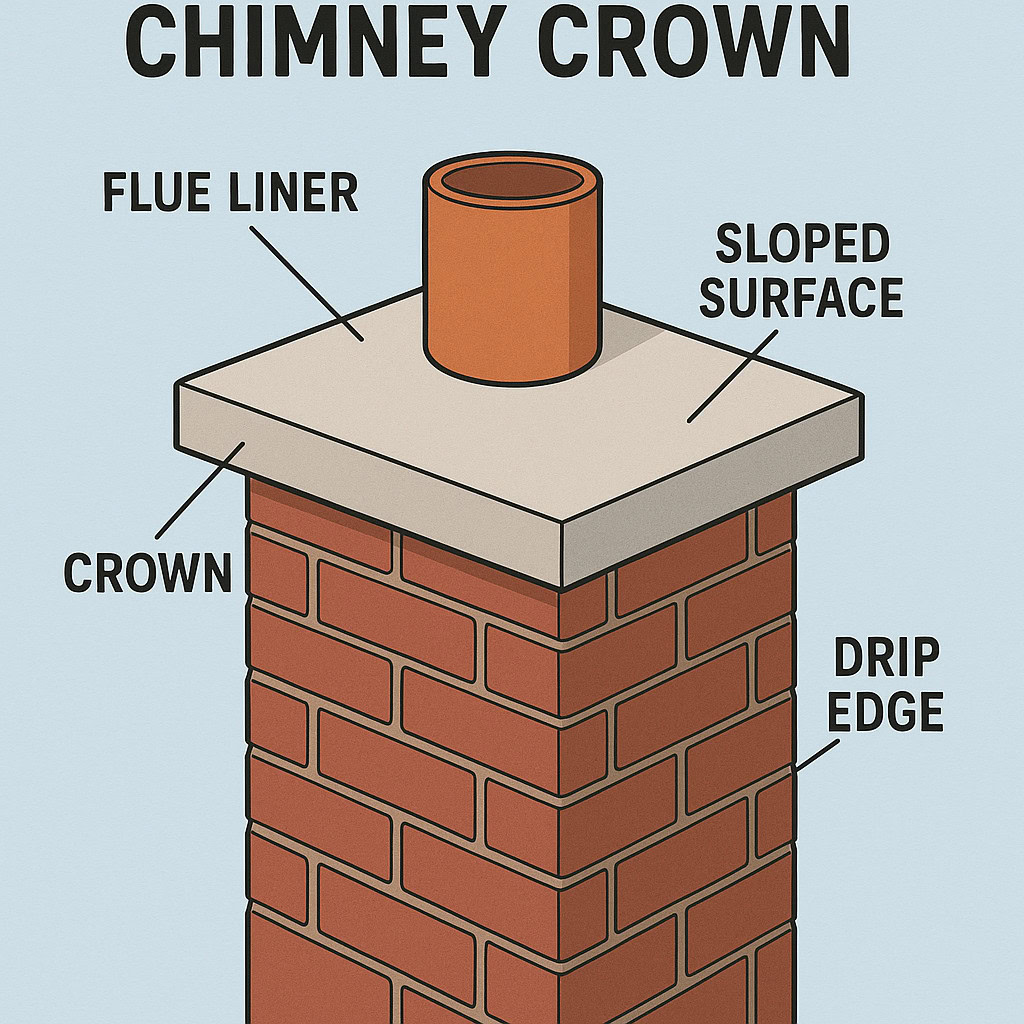
Role in Chimney Function
The crown slopes outward and is slightly overhanging, which helps direct water away from the chimney bricks and mortar. This design reduces the chances of moisture seeping into the structure, which can cause erosion and internal damage.
Chimney Crown vs. Cap vs. Chase Cover
It’s common to confuse the chimney crown with similar components:
- Chimney Cap: A metal or stainless-steel lid placed directly over the flue to keep out rain and debris.
- Chase Cover: Found on prefabricated chimneys, usually made of metal and covering the entire chimney top.
- Crown: The actual concrete (or mortar-based) slab for masonry chimneys.
Each part plays a protective role, but the crown is crucial for the chimney’s structural integrity.

Signs You Need Chimney Crown Repairs
Spotting early signs of crown damage can prevent costly structural repairs later. Here’s what to watch for:
Common Visible Symptoms
- Cracked or flaking crown surface
- Discoloration or moss growth
- Visible water leaks inside your fireplace
- Rusted fireplace components
- Crumbling mortar at the top of the chimney
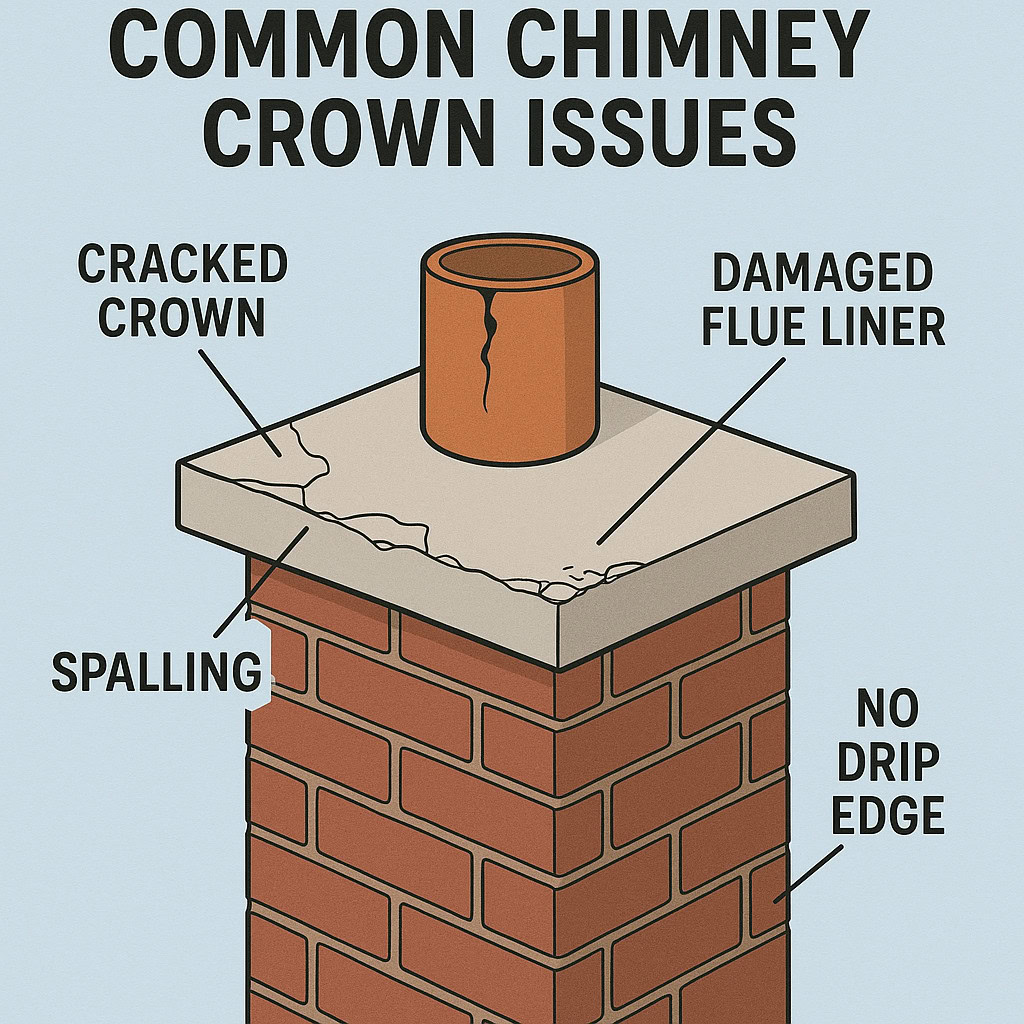
Issues from Delayed Repairs
Neglecting these signs can result in:
- Water penetration into the chimney and home interior
- Brick and mortar deterioration due to freeze-thaw cycles
- Mold growth and structural compromise
Prompt chimney repairs safeguard both your fireplace and home.
Causes of Chimney Crown Damage
Understanding what causes damage helps in both repair and prevention.
Weather-Related Erosion
Rain, snow, and seasonal freeze-thaw cycles can cause cracks in the crown. Over time, water seeps into these fissures, expanding them and accelerating damage.
Poor Construction Practices
Many chimney crowns are built using standard mortar instead of a concrete mix. Mortar isn’t waterproof or durable enough for crown-level exposure, leading to early failure.
Age and Wear
Even well-constructed crowns degrade with time. Decades of exposure eventually lead to cracking, erosion, or separation from the chimney structure.
Types of Chimney Crown Repairs
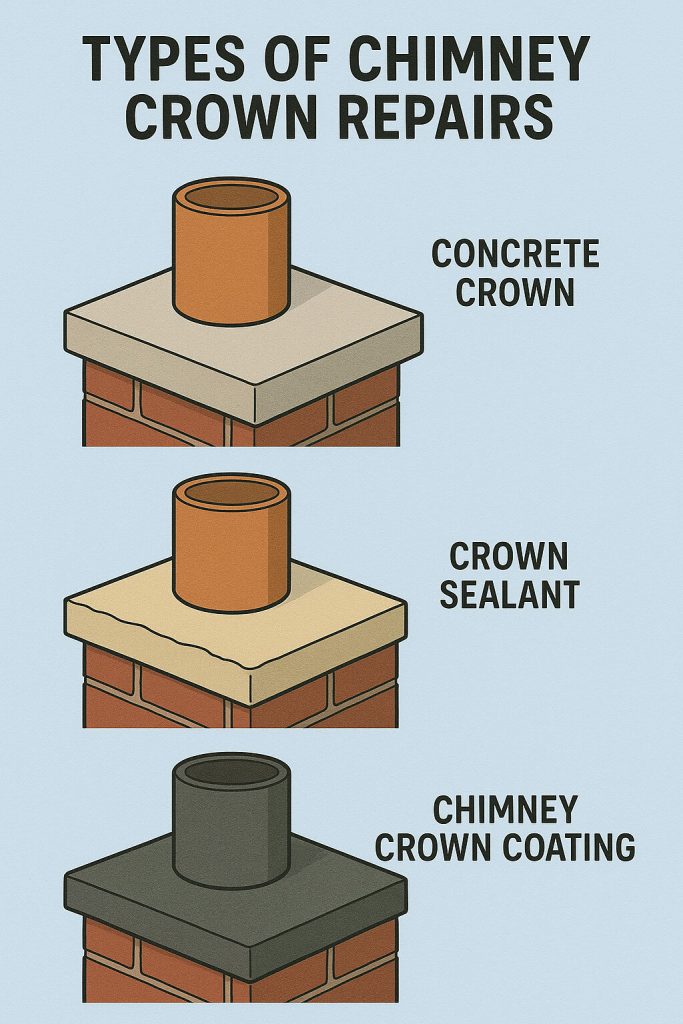
Depending on the extent of the damage, the type of repair varies:
Minor Crack Sealing
For hairline cracks, a waterproof sealant may suffice. This is usually a quick fix that extends the crown’s lifespan if caught early.
Crown Recoating
Moderate surface damage can be fixed using a crown coat or resurfacing compound. This involves cleaning the crown and applying a flexible, weatherproof layer over it.
Full Crown Rebuilding
Severe damage—such as deep cracks, major erosion, or structural separation—requires demolishing the existing crown and pouring a new one using a concrete mix designed to withstand the elements.
Step-by-Step Chimney Crown Repair Process
Inspection and Damage Assessment
A licensed chimney professional will inspect the crown using tools or even a drone for detailed assessment.
Cleaning and Surface Prep
Before repair, all debris, soot, and loose particles must be removed. This ensures proper adhesion of sealants or new materials.
Applying Sealant or Rebuilding
- Minor cracks: Silicone or polyurethane sealants are applied.
- Recoating: A specialized elastomeric crown coat is used.
- Rebuilding: The old crown is removed, and a new one is formed with concrete or a commercial crown repair compound.
Materials Used in Chimney Crown Repairs
Different levels of repair require different materials:
- Concrete: The best choice for longevity, especially for complete rebuilds.
- Mortar Mix: Less ideal but sometimes used for small patching jobs.
- Waterproof Sealants: Silicone-based or elastomeric sealants prevent further water damage.
DIY vs. Professional Chimney Crown Repairs
While some homeowners attempt DIY repairs, most jobs are better left to professionals.
Tools Needed for DIY
- Trowel
- Ladder
- Wire brush
- Sealant or patching material
Risks of Improper Repairs
Inexperience can lead to:
- Poor water runoff design
- Use of incorrect materials
- Short-lived repairs that worsen damage
When to Hire a Pro
If your chimney crown has deep cracks, erosion, or if you’re unsure of the material used, it’s safer—and often cheaper long-term—to call a professional.
Cost of Chimney Crown Repairs
Repair costs vary widely based on the type and extent of damage.
Price Range for Different Repair Types
| Repair Type | Estimated Cost |
|---|---|
| Crack Sealing | $150–$350+ |
| Crown Recoating | $400–$800+ |
| Full Rebuilding | $1,000–$2,500+ |
Factors Affecting Costs
- Chimney height and accessibility
- Material quality
- Location and labor rates
Cost Comparison: DIY vs. Pro
While DIY may seem cheaper upfront, improper sealing or mixing can cause further damage—resulting in even higher repair costs later.
How to Prevent Future Chimney Crown Damage
Proactive maintenance can extend your chimney crown’s life and save you from costly repairs.
Regular Maintenance Tips
- Annual inspections: Schedule yearly checks with a certified chimney sweep.
- Routine cleanings: Remove debris and moss buildup before it causes water retention.
- Check for cracks: Small surface fissures can be sealed early to prevent expansion.
Use of Chimney Waterproofing Products
Applying a water-repellent sealant designed for masonry can protect your chimney crown from moisture intrusion. These sealants penetrate the concrete and provide a breathable barrier, allowing water vapor to escape while preventing liquid water from entering.
Importance of Annual Chimney Inspections
Regular inspections catch problems early—before they escalate.
NFPA Recommendations
The National Fire Protection Association (NFPA) recommends that homeowners get a Level 1 chimney inspection every year, even if you don’t use your fireplace frequently.
What Inspectors Look For
- Cracks and separation in the crown
- Flue liner condition
- Mortar joint erosion
- Water damage and rust in the firebox
Inspections ensure both safety and structural integrity.
Regional Considerations for Chimney Crown Repairs
Climate and local regulations can influence how and when to perform repairs.
Cold vs. Warm Climates
- Cold climates: More prone to freeze-thaw cycles, which increase cracking.
- Warm climates: UV exposure can dry out and degrade sealants faster.
Local Building Codes
Cities may have regulations concerning chimney construction. For example, some require crowns to be at least 2 inches thick with overhangs extending 2 inches past the chimney’s edge.
Always hire contractors familiar with your region’s codes.
Choosing a Chimney Repair Specialist
Finding a qualified professional is essential for a lasting repair.
Certifications to Look For
- CSIA Certified Chimney Sweep (Chimney Safety Institute of America)
- NFI Certification (National Fireplace Institute)
- Licensed and insured in your state
Questions to Ask Before Hiring
- Can you show recent work examples?
- Do you offer a written warranty?
- What materials do you use for repairs?
- How long will the job take?
Research online reviews, Better Business Bureau ratings, and ask for referrals.
Environmental Impact of Neglected Repairs
Ignoring a damaged chimney crown doesn’t just risk your home—it impacts the environment too.
Moisture and Mold Issues
Water entering the chimney can seep into walls, promoting mold growth. Mold spores can trigger allergies and affect indoor air quality.
Energy Efficiency Loss
Cracks in the crown can allow heat to escape or cold air to enter, making your HVAC system work harder—and increasing your energy bills.
FAQs About Chimney Crown Repairs
Q: Can chimney crown repairs be done in winter?
A: Yes, but it’s weather-dependent. Dry, above-freezing temperatures are needed for sealants and concrete to cure properly.
Q: How long do chimney crown repairs last?
A: With quality materials and proper application, repairs can last 10–20 years or more. Rebuilt crowns with waterproofing last even longer.
Q: Is chimney sealing really necessary?
A: Absolutely. Waterproofing prevents future moisture damage and extends the life of the entire chimney system.
Q: How do I know if my crown needs to be rebuilt vs. sealed?
A: If there are deep cracks, missing chunks, or crumbling sections, a full rebuild is usually required. A professional inspection will confirm.
Q: What’s the difference between crown coating and rebuilding?
A: Coating involves applying a protective sealant over a structurally sound crown. Rebuilding means tearing down the existing structure and creating a new one.
Q: Can I repair the chimney crown myself?
A: You can seal small cracks yourself, but major repairs or rebuilds should always be handled by licensed professionals for safety and durability.
Conclusion
Chimney crown repairs might seem minor, but they play a vital role in preserving the integrity of your entire fireplace system. From preventing water intrusion and mold to ensuring energy efficiency, timely repair and maintenance of your chimney crown is crucial. Whether you opt for a DIY solution or hire a certified chimney expert, investing in proper crown care pays off in safety, comfort, and peace of mind.
Don’t wait until it’s too late—schedule an inspection, patch those cracks, or rebuild your chimney crown today.


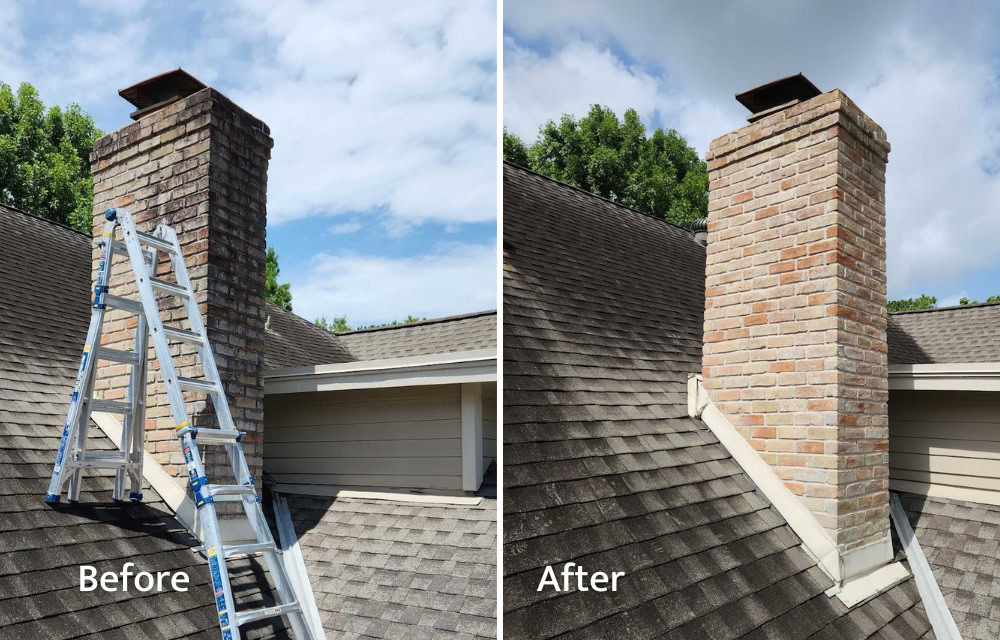

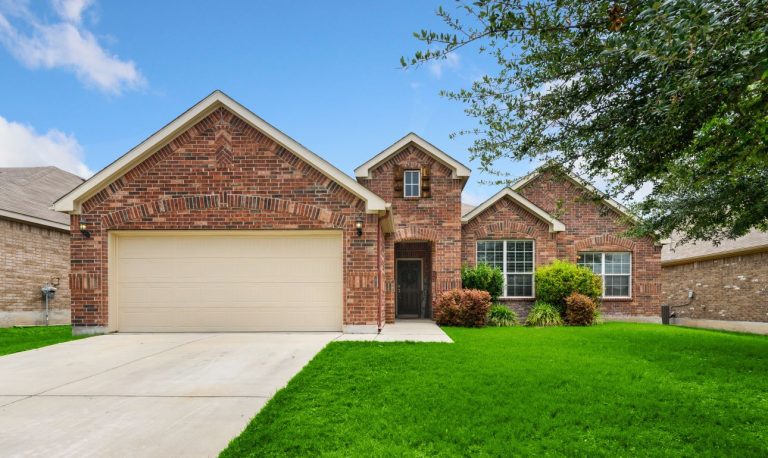
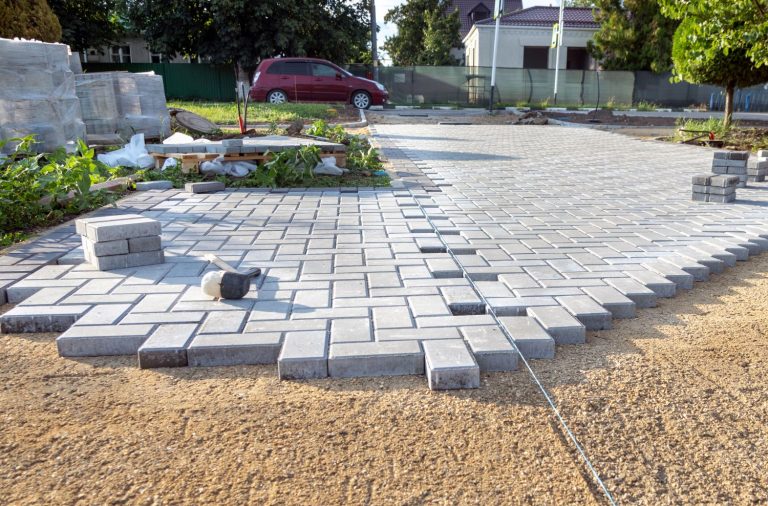
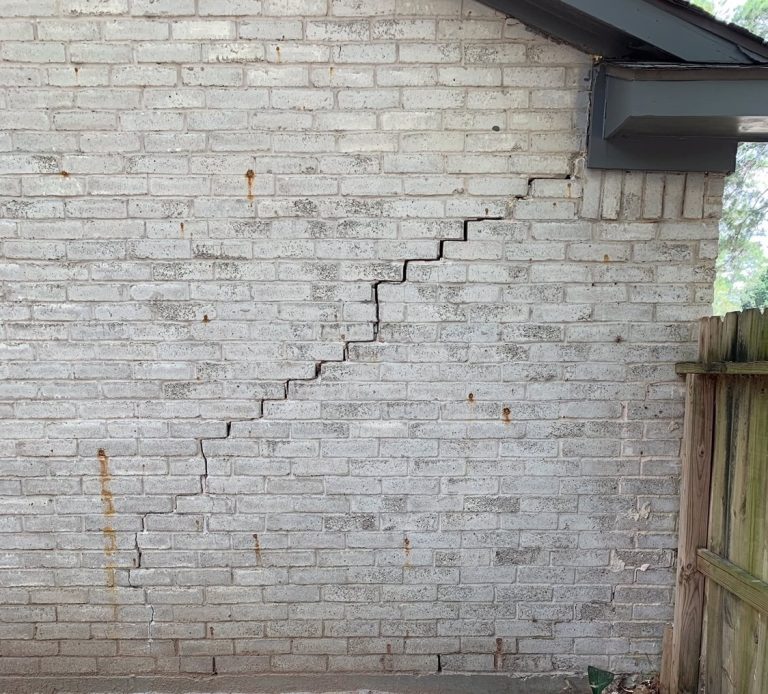
Great post! Clear and helpful tips on chimney crown repair perfect for preventing damage. Thanks for sharing!